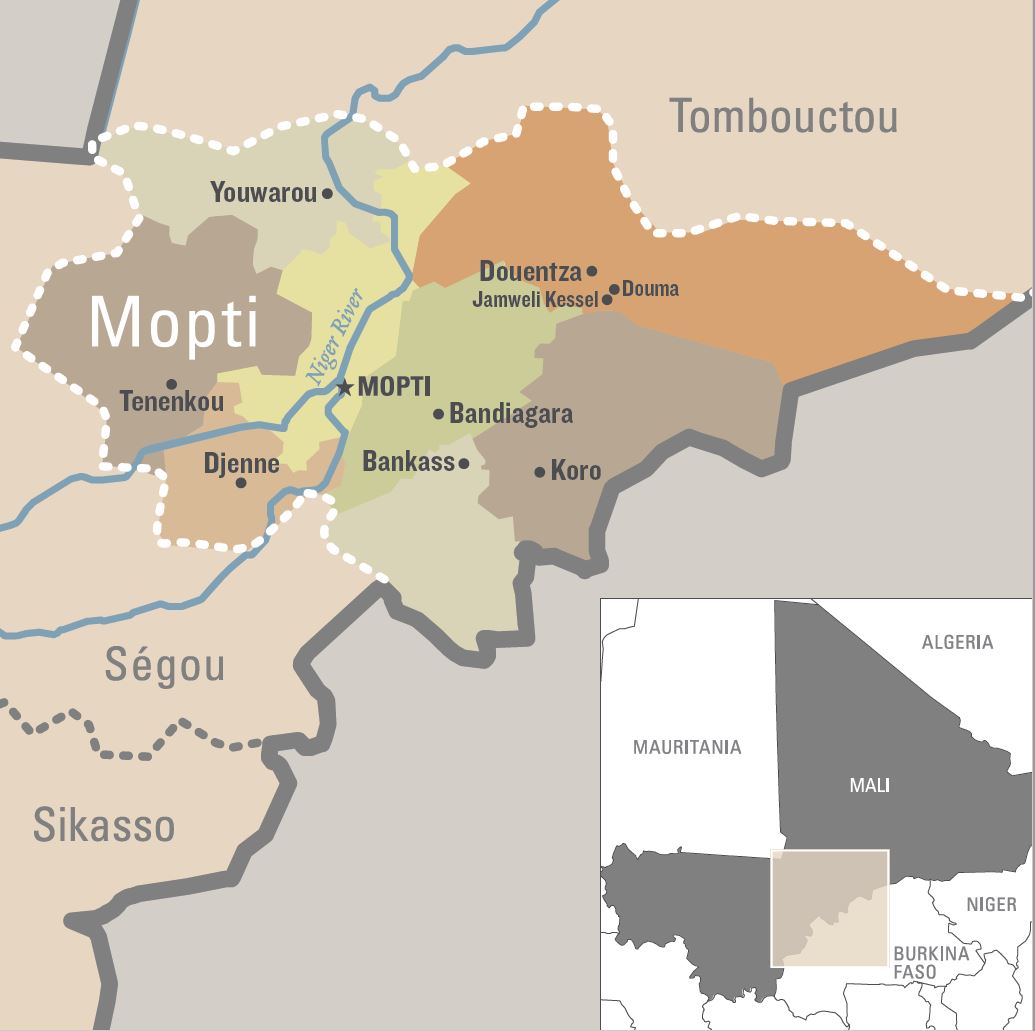May 21, 2018

One goal of the Simon-Skjodt Center’s research program is to explore new methodologies to advance the state of the art in atrocity prevention. Towards this end, a recent pilot project analyzed dangerous speech in central Mali, building on the Holocaust Museum’s hate speech work and adding to the Early Warning Project’s broader Mali assessment.
Dangerous speech, a term coined by Susan Benesch, is “any form of expression (speech, text, or images) that can increase the risk that its audience will condone or participate in violence against members of another group.” Dangerous speech can be one of many early warning signs for violence, and context-specific research is necessary to understand how speech is interacting with other factors that might relate to future scenarios of mass violence. While scholars debate the role of dangerous speech in inciting perpetration of atrocities, in the chapter “Triggers and Escalation” in Scott Straus’s Fundamentals of Genocide and Mass Atrocity Prevention, he posits that regardless of its causal role (or lack thereof), dangerous speech “can serve as an indicator of strategic thinking and attitudes that elites are preparing or willing to promote violence.” He goes on to explore the role of derogatory categorizations used in public speech, “especially categories that indicate that the enemy is inherently dangerous, devious, ruthless, or unworthy.” Importantly, speech may operate differently from one context to another.
This scholarship has become a part of the atrocity prevention literature. The UN Framework of Analysis for Atrocity Crimes lists “Increased inflammatory rhetoric, propaganda campaigns or hate speech targeting protected groups, populations or individuals” as an early warning indicator for atrocity risk. Similarly, the US State Department/USAID Atrocity Assessment Framework states, “In other cases, perpetrators must rely on other strategies to mobilize people to attack civilians, for example, by stoking fear and hatred of the target group, aided by a strong propaganda capacity. The narrative is likely to include ‘dangerous speech,’ such as dehumanization of the target group, accusing it of plotting harm, or emphasizing past instances of supposed harm by the target group.”
One of the challenges in studying dangerous speech, however, is that it varies significantly from context to context, across languages and cultures and time. This makes it especially challenging for external researchers to identify the terms and phrases that might be considered “dangerous” in any given community, and to understand how speech may be operating within the particular context. As an attempt to fill this gap, the goal of this pilot project was to work with local researchers to explore the utility of using Critical Discourse Analysis to describe and analyze speech in central Mali, where interethnic violence has been on the rise. The study, which is based on a very limited sample size, investigates the relationship between Fulani (or Peul) and Dogon communities by analyzing the words they use to talk about each other. The study was proposed and led by Dr. Ibrahima Abdoul Hayou Cisse, a linguist at the University of Bamako.
Critical Discourse Analysis, in this case, combines text analysis of participants’ answers to open-ended questions—e.g., “Tell me whatever you know about what has been happening in your region recently”—with structured survey questions to provide more context. Local researchers transcribed responses to the above questions in local languages, Dr. Cisse translated those responses into English and used software to extract instances where one group talked about the other, and then analyzed how each group portrayed the other.
The report analyzes data from two villages in Douentza, part of what is colloquially known as “Dogon Country” in the Mopti Region of central Mali. These villages have not experienced intercommunal violence in recent years, but share many characteristics of a very violent bordering area. The goal for the discourse analysis is to provide insight into the attitudes and perceptions of each group in an area at risk before conflict occurs. This research was set up as a small pilot project to test the methodology (eight participants, five men and three women, from two villages were interviewed); thus, the findings should not be generalized.
The research identifies negative words that members of each group used to talk about the other, acknowledging the small sample size. For example, Dogon participants called Fulani “amanasaara” (people who do not honor their word). Fulani respondents, conversely, focused on physical characteristics when speaking of the Dogon.
The insults themselves are relevant—especially to those working in the region and seeking to understand nuances of culture and identify dangerous speech as it occurs—but are only one step toward understanding intergroup relations. To that end, the study assesses each group's perceptions of the other by asking questions such as “Who is a threat to your ethnic group?” and “Who is a jihadist?” It also asked about the quality of the Fulani-Dogon relationship in the past as compared to today, to which all respondents from both ethnic groups asserted that the relationship was good in the past but five out of eight said that it is either bad or very bad today. Again, these findings cannot be generalized due to the small sample size surveyed, but might suggest additional avenues for future research.
Most discussions about security in Mali focuses on terrorism, but armed group recruitment is often motivated by perceptions of threat between local groups rather than jihadist ideology. Understanding the intercommunal dynamics of the actors involved—which can be exhibited through the language each uses to talk about the other—can lend insight into each group’s perceptions and motivations. Ultimately, this analysis of social cohesion (or lack thereof) between communities in Mali, identified through speech, can serve as a starting point for future analysis of the relationship between dangerous speech and violence in other areas experiencing deteriorating inter-group relations and increasing conflict.
Download the report (at the bottom of the page): “Dangerous Speech in Central Mali: A Critical Discourse Analysis of the Dogon-Fulani Relationship”
View All Blog Posts